Final year project
A device providing prevention and early intervention treatments for hand and… [Read more]
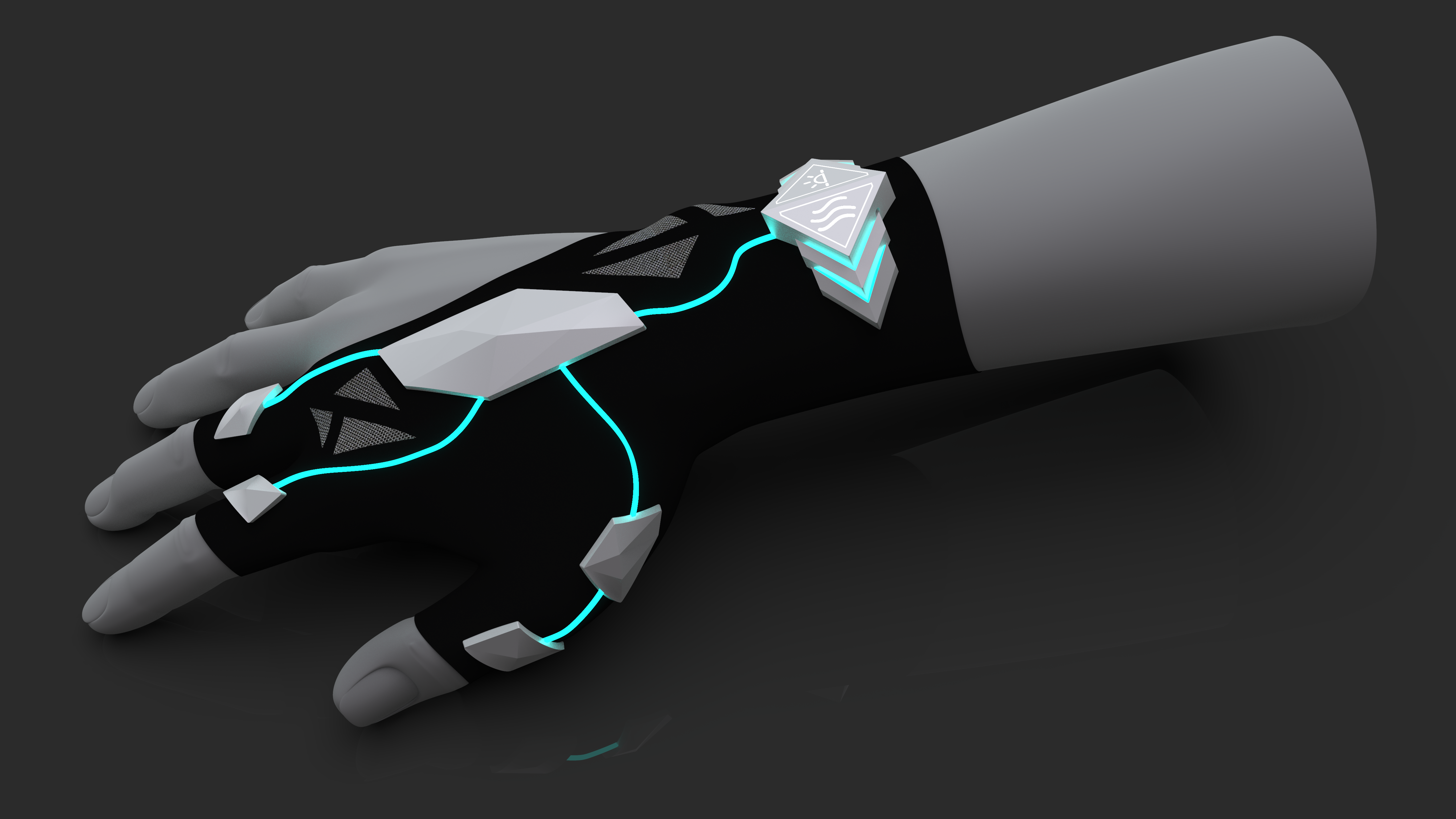
AURA - A device for Hand and Wrist Musculoskeletal Injuries in E-Sports Athletes
Inspired by the difficulties faced by aspiring E-Sports athletes, 'AURA' is a wrist and hand device to be worn by players during training with the aim to improve awareness of the injury and provide customised treatments for greater career longevity.
EMG sensors throughout the lightweight and breathable glove gather data on the muscle activity in the hand and relay this to the software program to provide a hand 'map' informing wearers of strain points and potential risks such as repetitive strain injuries while also offering customised exercises to be carried out by the user. This data is also used to alter the heating elements in the glove for treating the specific risk areas of their hand and wrist in intervals that would not interfere with their training.
The aesthetics were inspired by popular gaming products and video game design itself with bright LED strips and a geometric exoskeleton design, in which the motion of the hand and the avoidance of restriction was heavily considered.
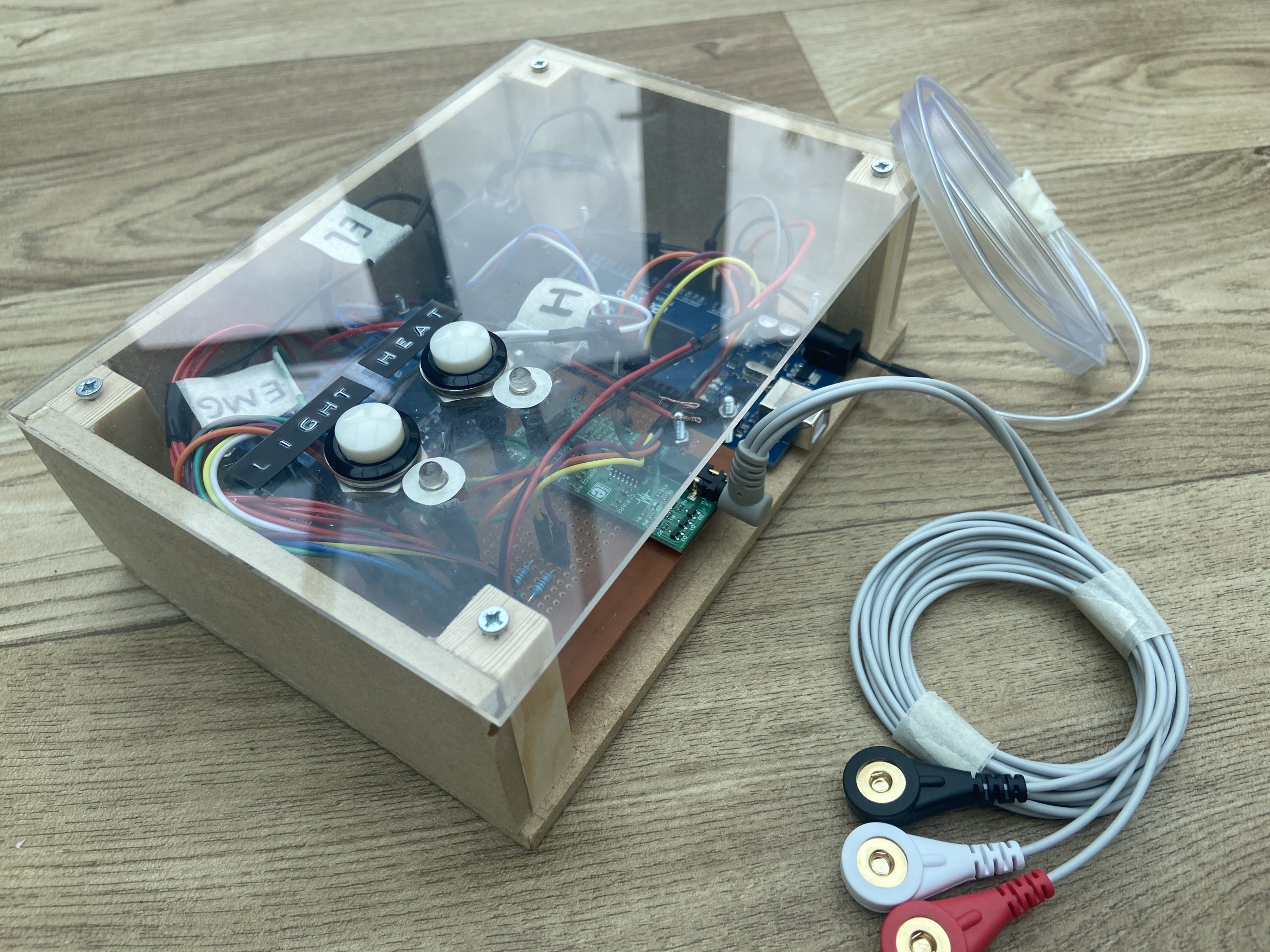

AURA - Electronic Prototype
Integrating my developed skills in electronics, I created a working prototype for testing and evaluation of my final design. I wrote code iterations and employed my problem-solving skills to create an efficient system along with componentry such as a relay module and a high voltage inverter for the electroluminescent wire to create a simulation of all electronic features in the final design.
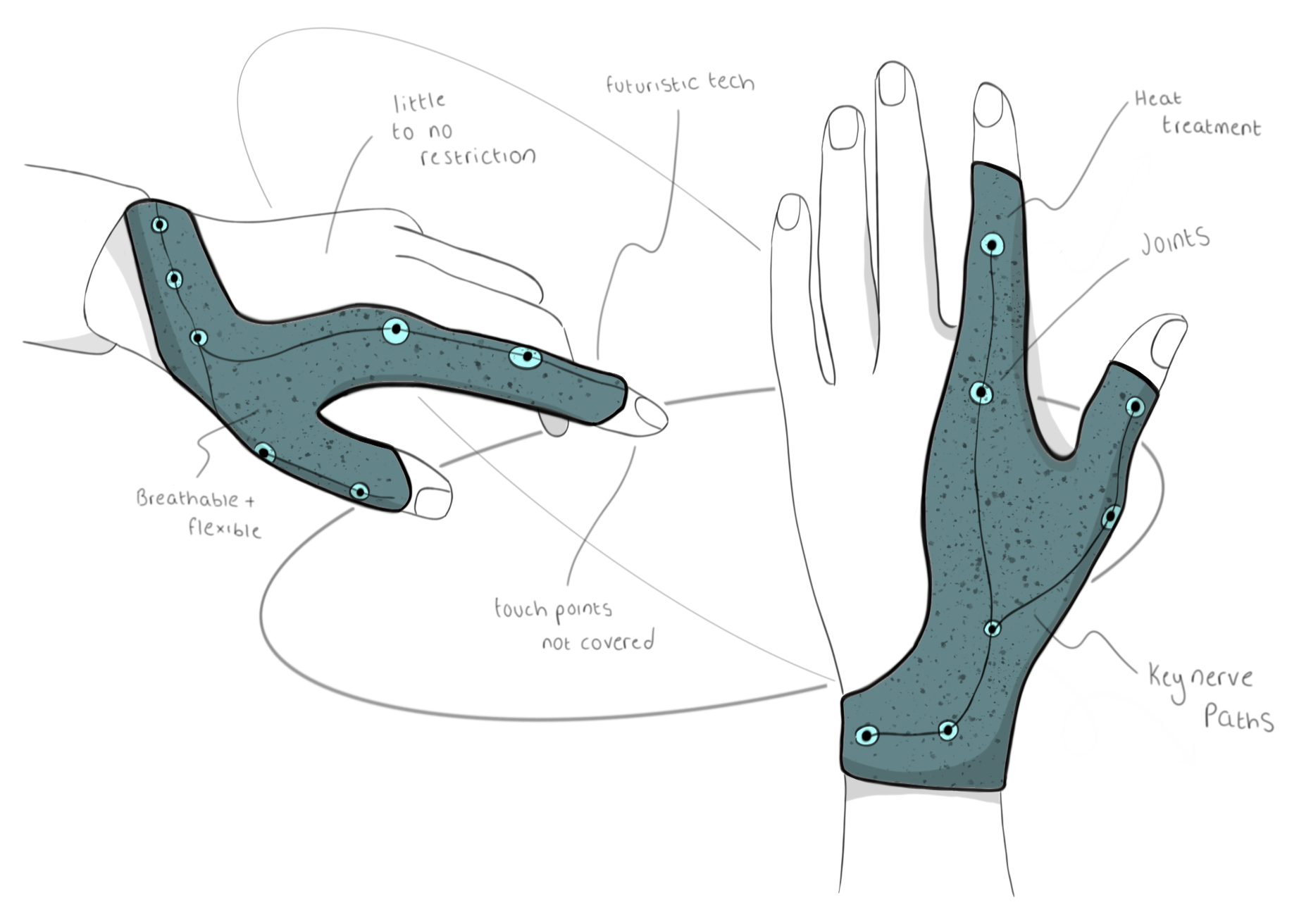

AURA - Early Ideation Sketch
The ideation stage for AURA involved the creation of a wide range of concepts, with initial limitations being space on the desk and restriction of wrist motion. I drew inspiration from a variety of popular video games for aesthetic features such as patterns and colours, using members of my demographic, being males aged between 20 and 30, to provide feedback on preferable aspects of the design in order to produce a final concept.
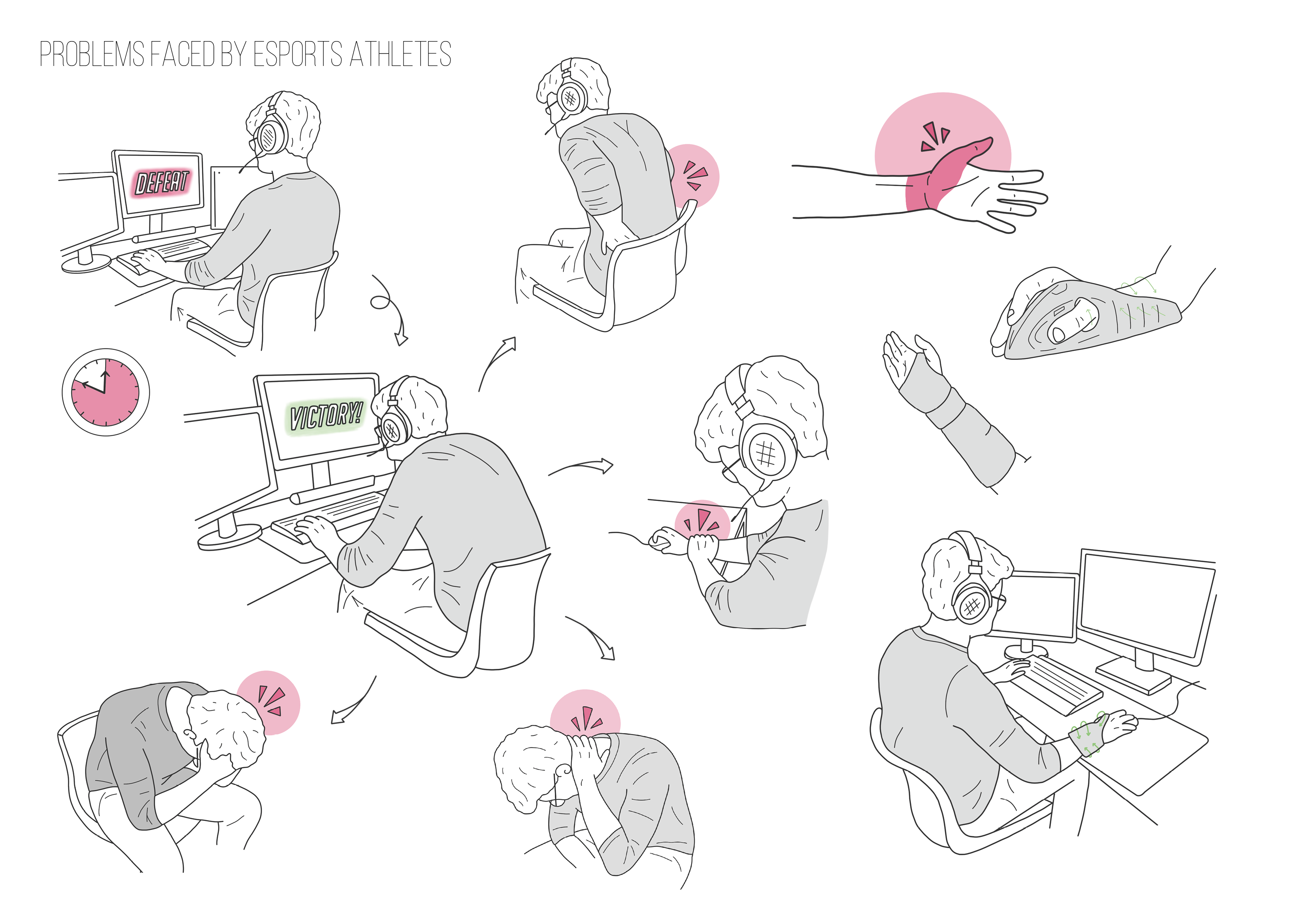

AURA - Improving the Sustainability of Careers in E-Sports
National and international competitions take place throughout the year for a range of popular video games where teams compete in stadiums to win large sums of money. These teams are formed by managers who scout talent at many of the contender competitions and offer the individuals the chance to live in team houses and train full time.
Those who aspire to reach the top in this industry often overlook the issue of early retirement, with multiple high profile case studies of professionals who have been forced to retire due to injuries, many of which are wrist related. With the skill level increasing each season, the dedication and training required to achieve success should be supported, and aspiring players must be better informed.
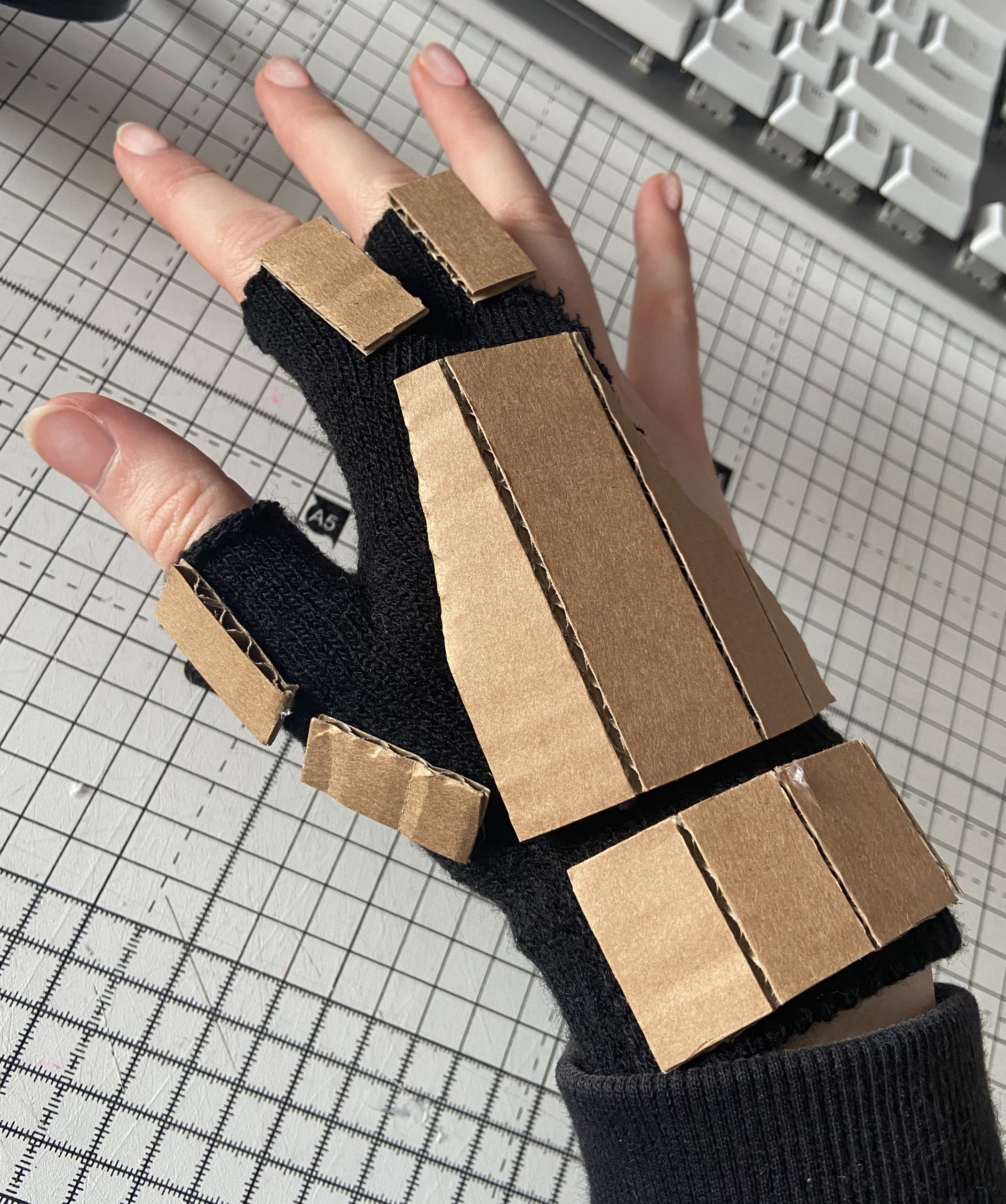

AURA - Development Prototyping
Prototyping throughout the design process was invaluable in understanding solutions and so various iterations of product concepts were represented with low fidelity prototypes. These were tested in scenarios in order to develop the best possible solution, offering no restriction to hand and wrist movement whilst providing research-based treatments and a desirable aesthetic for the demographic.


AURA - Design for Manufacture
In the later stages of development, manufacturing considerations such as fixtures, internal componentry and assembly features were integrated into the final concept. This resulted in some small alterations to the external geometry and outlined the processes and costs for mass production.
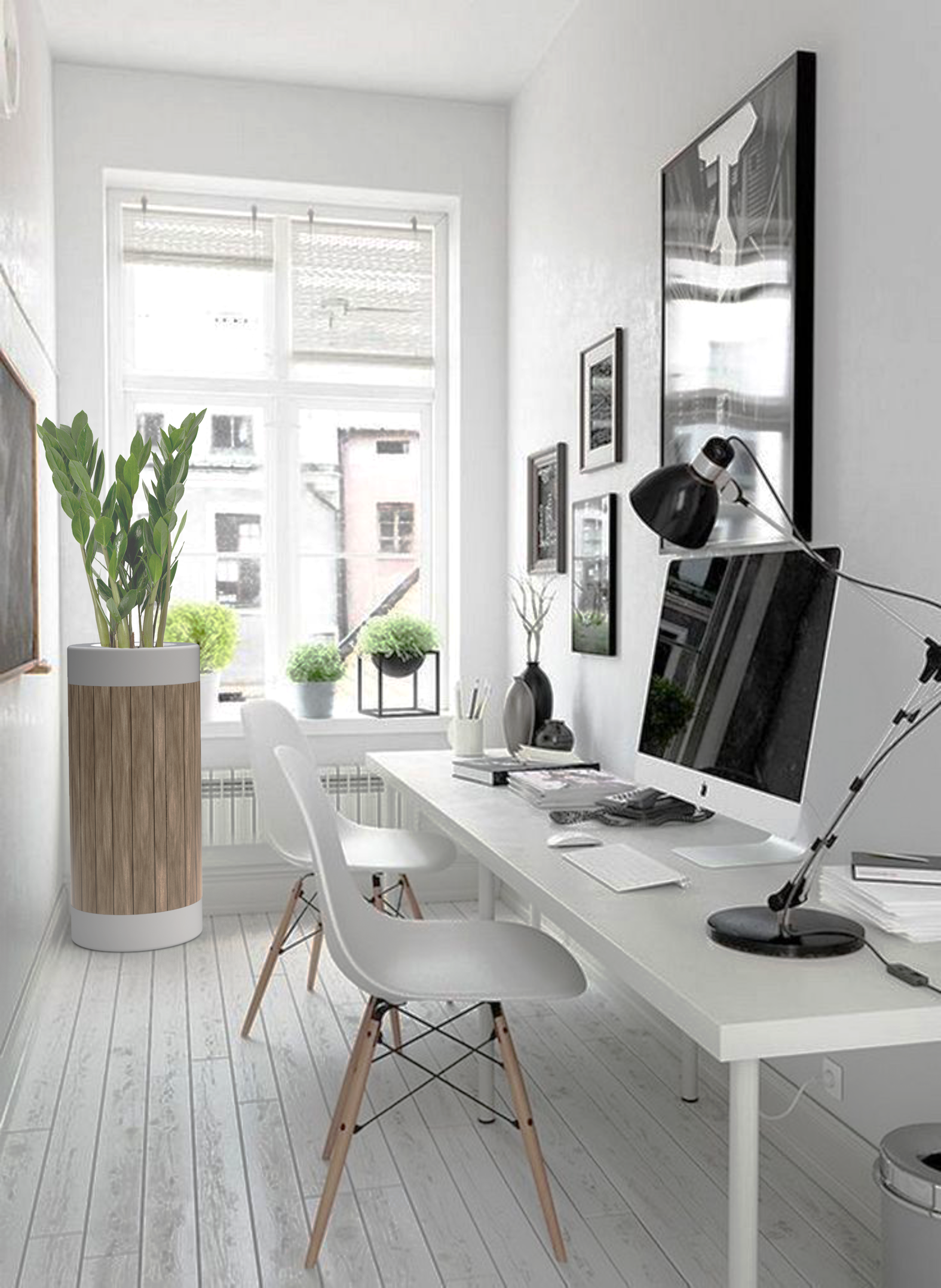

Design Week 2021 - New Leaf
My chosen design week brief was to design a product to encourage better physical or mental wellbeing, New Leaf is an all-in-one fitness set for a working professional based in a home office. Inspired by the recent surge in working from home during the pandemic, New Leaf was designed to encourage regular guided exercise through teams in a business.
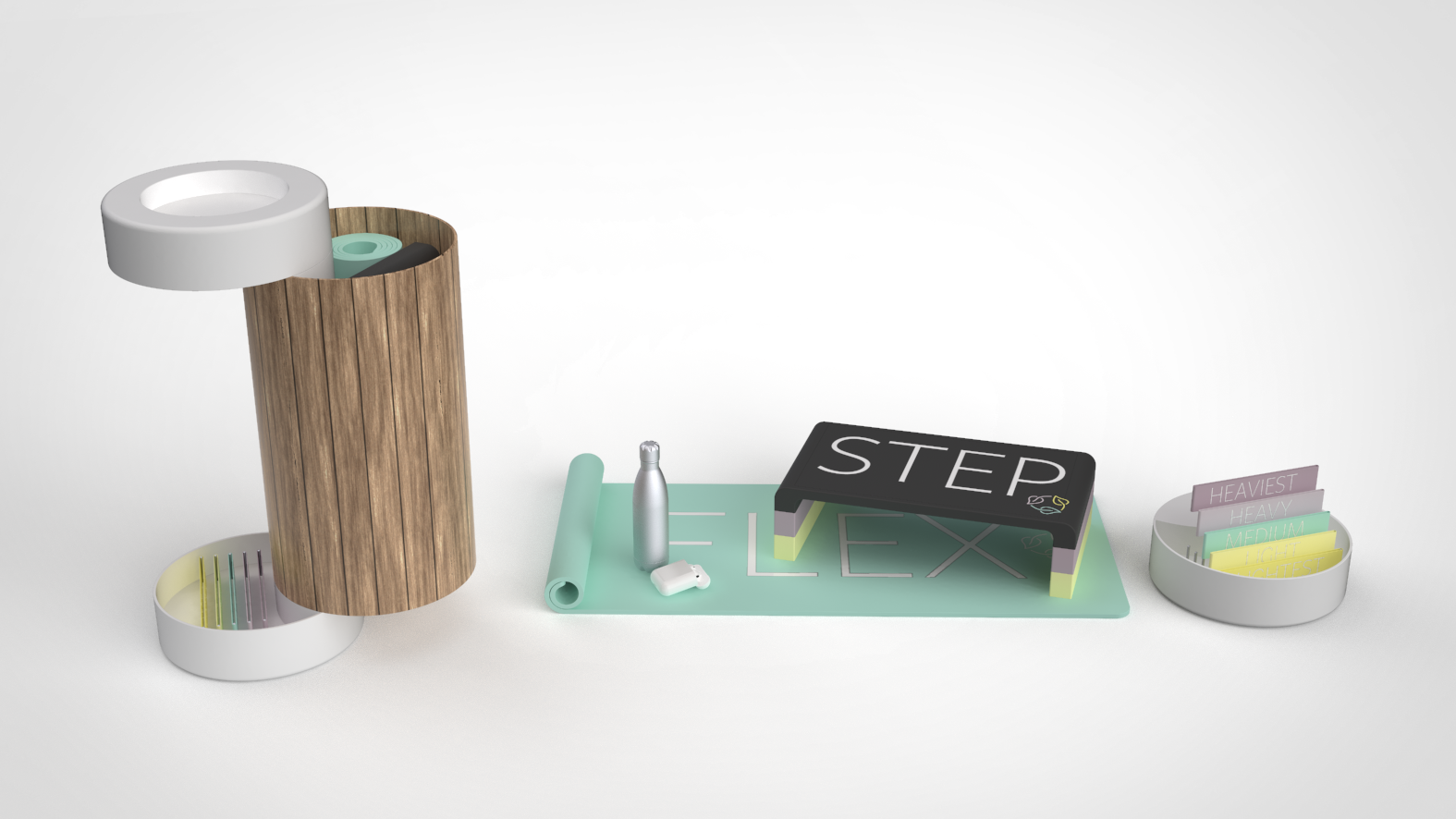

Design Week 2021 - New Leaf
Combined with a software program that offers group and solo workout sessions, New Leaf is a solution to the pain points of small spaces, busy work schedules and continued motivation through a company-sponsored and team-based initiative to improve physical and mental wellbeing while working from home.
Georgia Banton
My work focuses heavily on the combination of high quality and research inspired aesthetics with detailed design to manufacture features and working electronic prototypes.
My strengths as a designer include computer-aided design and manufacture with skills in both surface and solid modelling in SolidWorks, attention to detail in assembly features and the production of high-quality product proposal renders using Keyshot. My work also focuses on electronic prototyping with Arduino for use in interaction and functional testing. I am also able to create both low and high fidelity appearance prototypes using a range of workshop machinery within short time frames.
My other strengths include ideation, development, testing and evaluation, each of which was enhanced during my placement year that involved industry level electronic appliances. I aim to continue my design career in the advanced development of electronic product design, working in both digital and physical modelling and prototyping within a fast-paced team environment.
Final year project
A device providing prevention and early intervention treatments for hand and wrist musculoskeletal injuries in E-sports athletes.
Work Experience
My industrial placement during 2019-2020 was as an engineering intern with SharkNinja, a vacuum and kitchen appliance design company. During the year I was able to partake in all aspects of the design process, developing an understanding of industry standards at each stage.
As an engineering intern, I was part of an advanced development team in which I assisted in the rapid production of digital models and working prototypes for testing. The fast production of electronic prototypes developed my skills in circuit design, coding and componentry, and having the opportunity to test each iteration resulted in a great understanding of both the internal and external features of appliance design.
My initial challenges at the start were with the use of high voltage power sources, as previous electronic work I had taken part in was on a far smaller scale. This, however, was invaluable in the evolution of my understanding of electronic mathematics and safety features as an industry standard.
Being able to work as part of a team meant that I was able to learn from more experienced designers, not only from my own team in advanced development but from other teams such as robotics and new product development. Carrying out a year in the industry not only enhanced my skills as an Industrial designer but also re-ignited my interest in physics and electronics, both of which I strive to incorporate into my design work to create innovative and inspiring products.